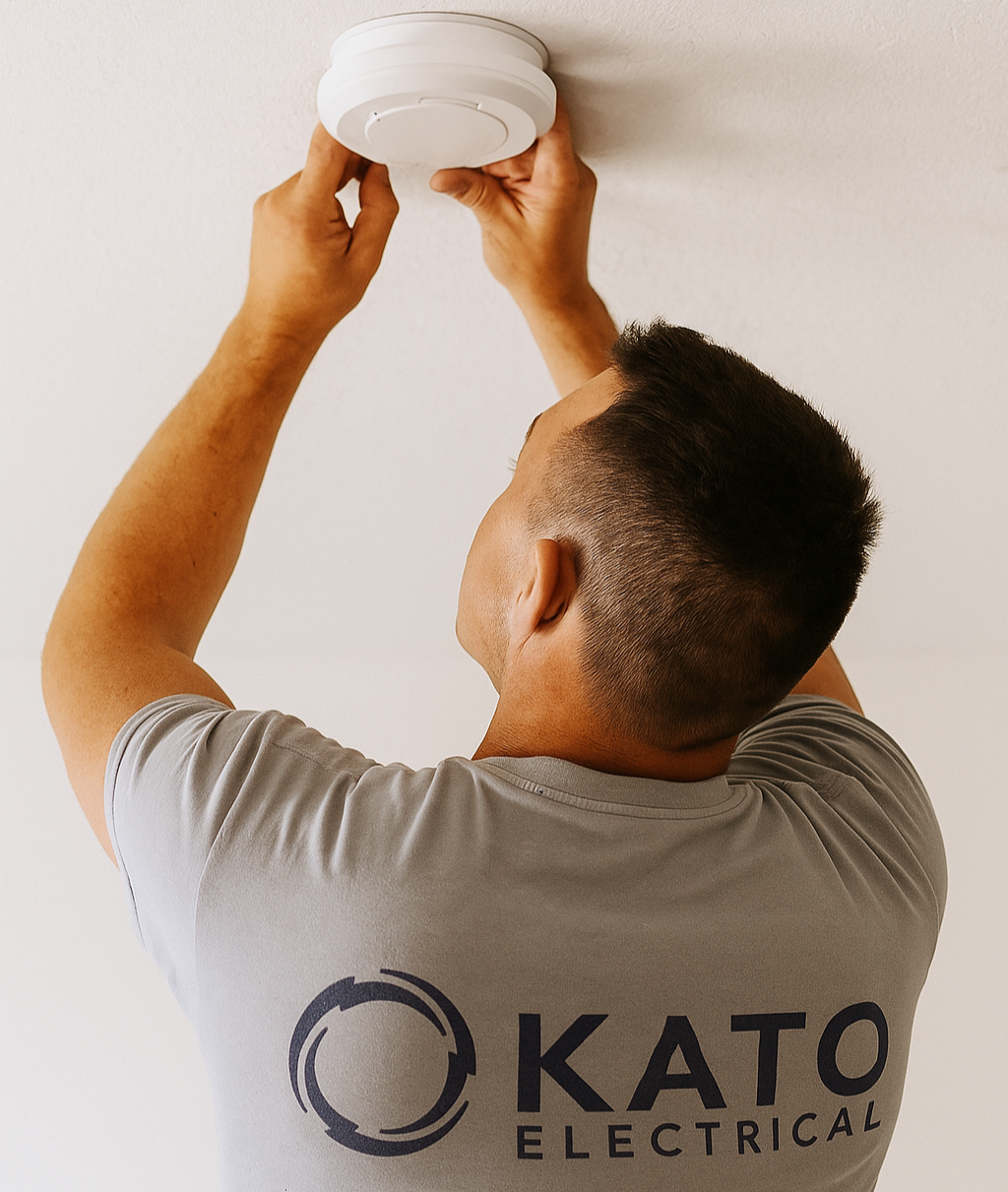Why You Should Test Your Smoke and CO Detectors This Fall
As temperatures drop and we spend more time indoors, our homes rely heavily on heating systems, fireplaces, and electrical equipment — all of which can increase the risk of fire or carbon monoxide (CO) exposure. This fall is the perfect time to test your smoke and CO detectors to ensure they’re in proper working order. A quick check today could prevent a serious emergency tomorrow.
At Kato Electrical, we help homeowners across Vancouver and the Lower Mainland stay protected year-round with expert safety checks and reliable electrical solutions.
Why Testing Your Smoke and CO Detectors Is Important
1. Early Warning Saves Lives
Smoke alarms act as early guardians, alerting you to danger before a small spark becomes a serious fire. Likewise, carbon monoxide detectors provide silent protection against a gas you can’t see or smell but that poses real risks to your family’s health.
2. Batteries and Sensors Degrade Over Time
Even if your detectors seem fine, the internal sensors can wear out, and batteries can lose their charge. Testing ensures both the alarm sound and sensor are functioning properly.
3. Fall Is the Perfect Time
Fall marks the start of heating season — furnaces, fireplaces, and space heaters all come back online. Testing your alarms before winter ensures your home is protected when risks are highest.
How to Test Your Smoke and CO Detectors
Press and Hold the Test Button – Most detectors have a test button; hold it down until you hear a loud alarm.
Replace Batteries if Needed – If your detector doesn’t sound or is weak, replace the batteries immediately.
Check the Expiration Date – Smoke and CO detectors usually last 7–10 years.
Vacuum Around the Detector – Dust buildup can affect performance; gently vacuum or wipe the unit clean.
Consider Interconnected Detectors – Modern systems connect wirelessly so when one alarm sounds, all do — increasing safety coverage.
How Often Should You Test Your Alarms?
Test monthly to ensure the alarm and power source are functional.
Replace batteries every 6 months (often during Daylight Saving Time changes).
Replace entire units every 7–10 years.
Common Questions About Smoke and CO Detectors
❓ How can i tell if my smoke or CO detector is expired?
Check the back or side of the unit for a manufacture date. If it’s older than 7–10 years, replace it immediately — sensors degrade even if the alarm still beeps.
❓ Do combination smoke and CO detectors really work as well as separate units?
Yes. Many modern detectors are combination units that sense both smoke and CO, ideal for simplifying maintenance.
❓ Which rooms and areas need smoke and carbon monoxide detectors?
Place one in each bedroom or sleeping space to ensure everyone hears the alarm, even with doors closed; Install another just outside the bedrooms, such as in hallways or shared areas, for early detection throughout the night; Don’t forget to have a detector on every floor of your home, including the basement, so no level is left unprotected. CO detectors: Near sleeping areas and close to fuel-burning appliances (like furnaces or fireplaces).
❓ Why does my alarm chirp even when there’s no smoke or CO?
That usually means low battery or end-of-life warning. Replace the batteries first; if it continues, replace the detector.
❓ Can an electrician help with installation?
Absolutely. A licensed electrician can install hardwired, interconnected detectors that meet BC building code and ensure full-home protection.
Conclusion
Testing your smoke and CO detectors this fall is one of the simplest ways to protect your home and family.
Unsure if your alarms are up to code, or looking to upgrade to hardwired or interconnected units?
Kato Electrical can take care of it for you.
Contact Kato Electrical today for professional smoke and CO detector installation or a full home electrical safety inspection.

